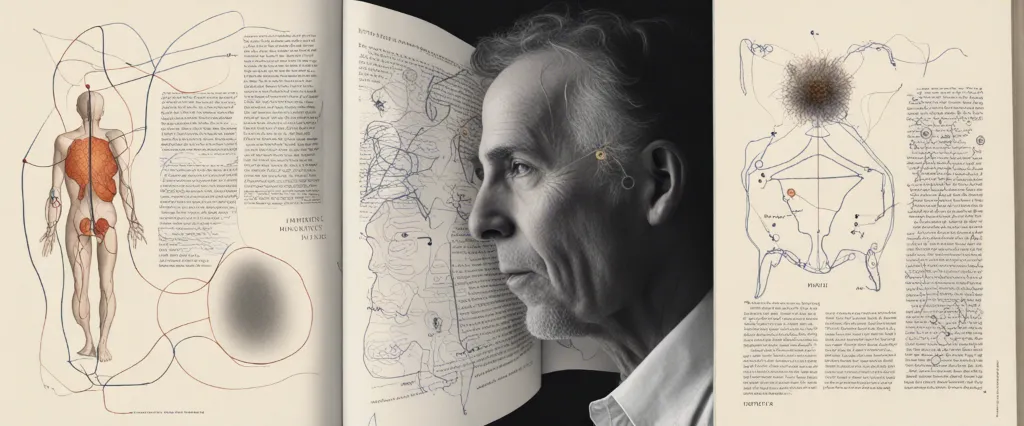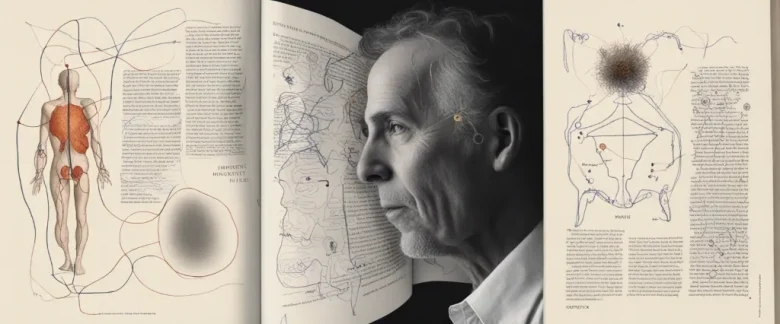
In “The Story of the Human Body,” written by Daniel E. Lieberman, an esteemed professor of Human Evolutionary Biology at Harvard University, readers embark on a fascinating journey through the evolutionary history of our species. Lieberman meticulously unravels the complex tapestry of the human body, offering a captivating exploration of how our anatomy has been shaped over millions of years of evolution. Delving into various aspects of our physiology, from bipedalism to teeth, digestion, and the impacts of modern sedentary lifestyles, the author masterfully brings together scientific research and anthropological insight to provide a comprehensive understanding of our uniquely evolved human form.
Chapter 1: The Big Picture of Evolution
Chapter 1: The Big Picture of Evolution of the book “The Story of the Human Body” by Daniel E. Lieberman provides an overview of the fundamental concepts and context for understanding the evolution of the human body. The chapter emphasizes the interconnectedness of the human body’s form and function with its evolutionary history, highlighting the role of natural selection in shaping our anatomy.
Lieberman starts by explaining how most of human evolution occurred in Africa, where our ancestors adapted to the challenges posed by their environment. He introduces the concept of “adaptation” and its importance in the evolutionary process, explaining that our bodies are the way they are today because they are well-suited to the environments in which our ancestors lived.
The author discusses the principles of natural selection and how they drive changes in species over time. He emphasizes that natural selection acts on traits that enhance survival and reproduction, leading to a gradual accumulation of advantageous features. This process highlights the remarkable adaptations that have occurred in the human body, such as endurance running and the development of large brains.
Lieberman also addresses misconceptions about evolution, including the idea that humans are the pinnacle of evolution. He emphasizes that evolution is an ongoing process and the notion of humans as the endpoint is flawed, as other species continue to evolve alongside us.
Throughout the chapter, Lieberman introduces key concepts, such as genetic mutations and the interplay between genes and the environment, as well as the misconceptions and controversies surrounding evolution. This sets the stage for the subsequent chapters, which delve deeper into specific aspects of human evolution and how they have shaped our bodies and behaviors.
In summary, Chapter 1 explores the broader context of human evolution, illustrating key concepts and debunking misunderstandings, to provide readers with a foundation for understanding the story of the human body.
Chapter 2: The Story of Walking
Chapter 2: The Story of Walking from the book “The Story of the Human Body” by Daniel E. Lieberman explores the evolution and significance of the human ability to walk upright in comparison to other primates.
Lieberman begins by discussing the anatomical and biomechanical adaptations that distinguish humans from other mammals. These adaptations include the shape of the pelvis, the positioning of the spine and skull, the length and flexibility of the lower limbs, and the unique structure of our feet. These features work together to provide stability, balance, and efficiency during walking.
Walking on two legs, or bipedalism, is a key development in human evolution. Lieberman explains that bipedalism emerged around 6 million years ago as a response to a changing environment where bipedal locomotion was more advantageous than moving on all fours. He highlights the various theories scholars propose to explain this shift, such as freeing the hands for tool use, enabling long-distance travel, reducing heat stress, and improving visual surveillance.
The author also discusses the challenges humans face due to our evolutionary history. Our ancient adaptations to arboreal (tree-dwelling) life created certain constraints on bipedalism, such as reduced agility and an increased risk of falling. These constraints remain today, causing issues like back pain, foot disorders, and childbirth difficulties.
Additionally, Lieberman addresses the impact of cultural evolution on walking, such as the introduction of footwear and hard surfaces. He talks about how these factors have influenced human biomechanics, leading to various problems like reduced foot strength and posture-related ailments.
In conclusion, Chapter 2 highlights the importance of walking in human evolution and provides insights into the biological adaptations that distinguish us from other primates. It also emphasizes the effects of our evolutionary history and cultural practices on our walking abilities and related health issues.
Chapter 3: The Story of Running
Chapter 3 of “The Story of the Human Body” by Daniel E. Lieberman examines the evolution and significance of running in human history. Running has played a crucial role in our survival and adaptation as a species, dating back millions of years.
Lieberman begins by explaining that humans evolved to become exceptional endurance runners. Our ability to run long distances with efficient cooling mechanisms, such as sweating to regulate body temperature, allowed us to chase down and exhaust prey over long durations. This strategy provided early humans with a significant advantage in hunting and gathering food.
Furthermore, running also served a social purpose. It enhanced communication among individuals, as running is most successful in groups. By running together, humans could coordinate their movements, strategize, and share information, leading to improved survival rates.
The author also explores the physiological changes that occurred in our bodies as a result of running. Over time, our ancestors developed longer legs, shorter arms, and an upright posture, all of which contributed to better running efficiency. These adaptations, coupled with increased sweat production and changes in our feet, allowed early humans to run farther and faster, leading to greater success in hunting and gathering.
However, with the development of agriculture and the shift to a sedentary lifestyle, our need for running diminished. Modern humans now face the challenge of maintaining physical activity levels to combat the negative health consequences of a more sedentary lifestyle.
In summary, Chapter 3 of “The Story of the Human Body” highlights the instrumental role running has played in human evolution through enhanced hunting, improved communication, and the physiological adaptations it has caused. Understanding our evolutionary history of running can help us appreciate the importance of maintaining physical activity in our modern lives.
Chapter 4: The Story of Food
Chapter 8: The Future of the Human Body
Chapter 8, titled “The Future of the Human Body,” from the book “The Story of the Human Body” by Daniel E. Lieberman, delves into the potential changes that may occur within the human body in the coming years. The author introduces the concept of “evolutionary medicine” to highlight how human bodies have evolved based on our ancestors’ environments. By understanding this, we can predict and prepare for possible health issues in the future.
Lieberman discusses the challenges humanity faces due to our rapidly changing environment. Through technological advancements, our lives have become increasingly sedentary, which has adverse effects on our health. Lack of physical activity contributes to various ailments such as obesity, heart disease, and diabetes. Moreover, modern diets, rich in processed foods, have led to a rise in chronic diseases.
The author emphasizes the importance of adapting to this new environment, suggesting that our future bodies need to find a balance between our evolutionary past and the present. He suggests that physical activity, such as exercise, should become an integral part of our daily lives. Additionally, Lieberman advocates for a shift towards a more natural, unprocessed diet, which aligns with our evolutionary needs.
Lieberman also explores the potential role of genetic engineering in shaping the future human body. While genetic research has made significant progress, the author underscores the ethical challenges associated with altering our genes. However, he does argue that gene editing could potentially eradicate diseases caused by genetic mutations, leading to a healthier future population.
Overall, Chapter 8 discusses the challenges our modern lifestyle poses to our bodies, and the potential solutions that lie in adapting to our evolutionary past while embracing technological advancements in medicine and genetics. By understanding our evolutionary history, we can anticipate future health issues and make informed decisions to improve our well-being.
After Reading
In conclusion, “The Story of the Human Body” by Daniel E. Lieberman is a fascinating exploration of human evolution and the impact it has had on our bodies. Lieberman provides a comprehensive overview of our ancestors’ journey to becoming modern humans and explores how our bodies have adapted to different environments and lifestyles over time. From our diets and physical activity levels to the rise of chronic diseases, Lieberman reveals the complex interplay between our ancient past and our present-day health challenges. By delving into the past, Lieberman offers valuable insights into how understanding our evolutionary biology can help us live healthier lives in the present and future.



